Nestled within the rugged landscapes of Ha Giang Province, Tu San Canyon stands as nature’s masterpiece carved by millennia of geological forces. This emerald-green marvel slices through towering limestone walls, creating Vietnam’s deepest canyon and one of Southeast Asia’s most awe-inspiring natural wonders. As the Nho Que River winds its serpentine path through the gorge, travelers on the Ha Giang Loop find themselves drawn to its depths, where boat journeys offer a perspective that transforms mere sightseeing into profound connection with Vietnam’s northern frontier.
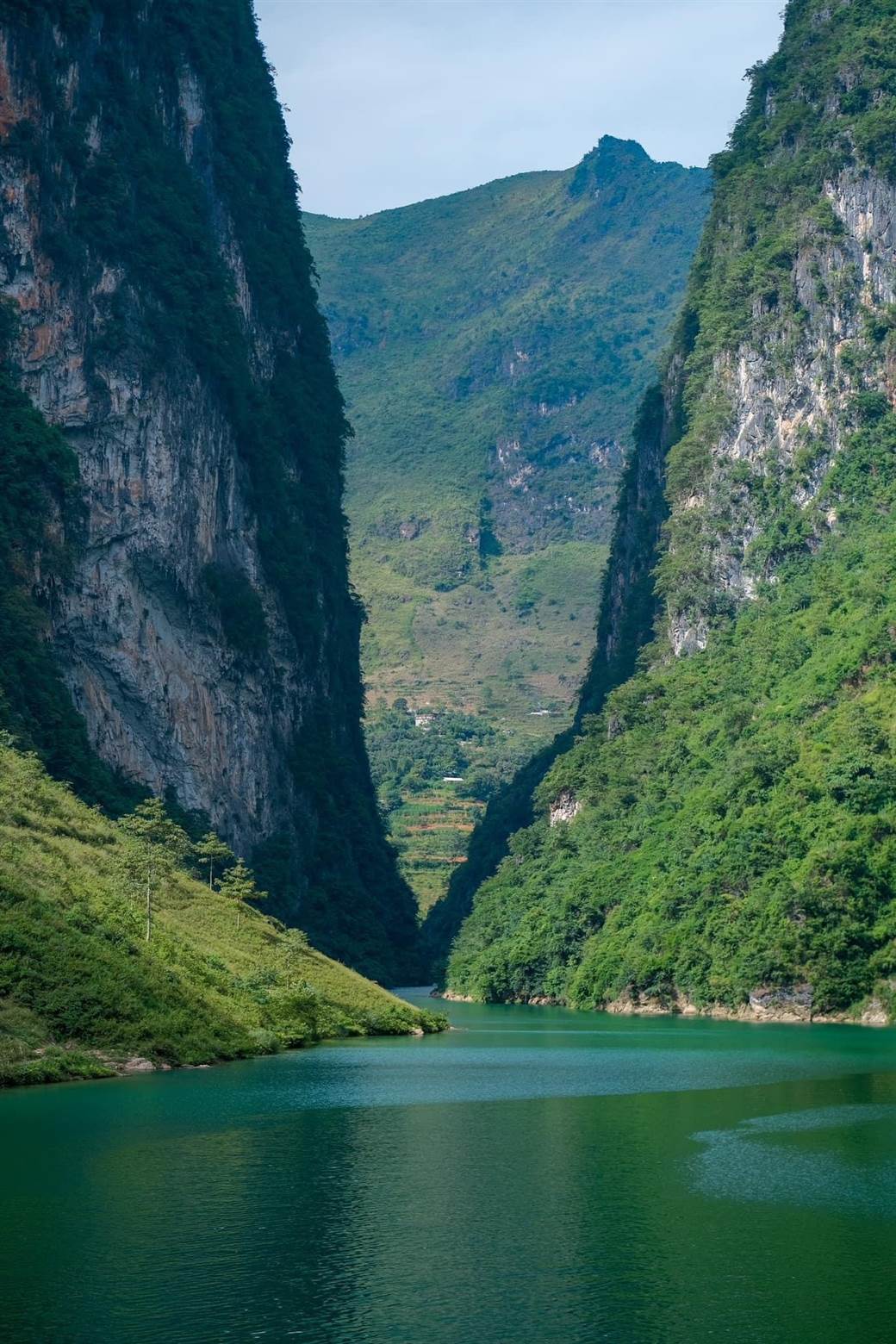
1. What and Where is Tu San Canyon?
Tu San Canyon is a dramatic geological formation located in the northern mountainous province of Ha Giang, Vietnam. Situated within the UNESCO-recognized Dong Van Karst Plateau Geopark, this natural wonder forms part of the famous Ha Giang Loop, a popular motorcycle route drawing adventure seekers from around the world. The canyon sits at the foot of the legendary Ma Pi Leng Pass, approximately 20 kilometers from Dong Van town and 15 kilometers from Meo Vac district.
1.1 The Geological Marvel of Ha Giang
Tu San Canyon represents millions of years of natural forces at work, primarily created by the persistent erosion of the Nho Que River cutting through ancient limestone formations. The canyon’s distinctive emerald-green water contrasts dramatically with the steep gray limestone cliffs that rise almost vertically on both sides. This landscape is part of the larger karst plateau system that characterizes much of northern Vietnam, a region shaped by tectonic activity and water erosion over countless millennia.
The geological significance of Tu San extends beyond its dramatic appearance. The canyon reveals multiple layers of sedimentary rock dating back hundreds of millions of years, offering scientists valuable insights into Earth’s history. These rock formations display fascinating patterns of folding and faulting, indicating the powerful geological forces that have shaped this landscape. For visitors, these ancient rock walls tell a visual story of natural history unfolding across deep time.
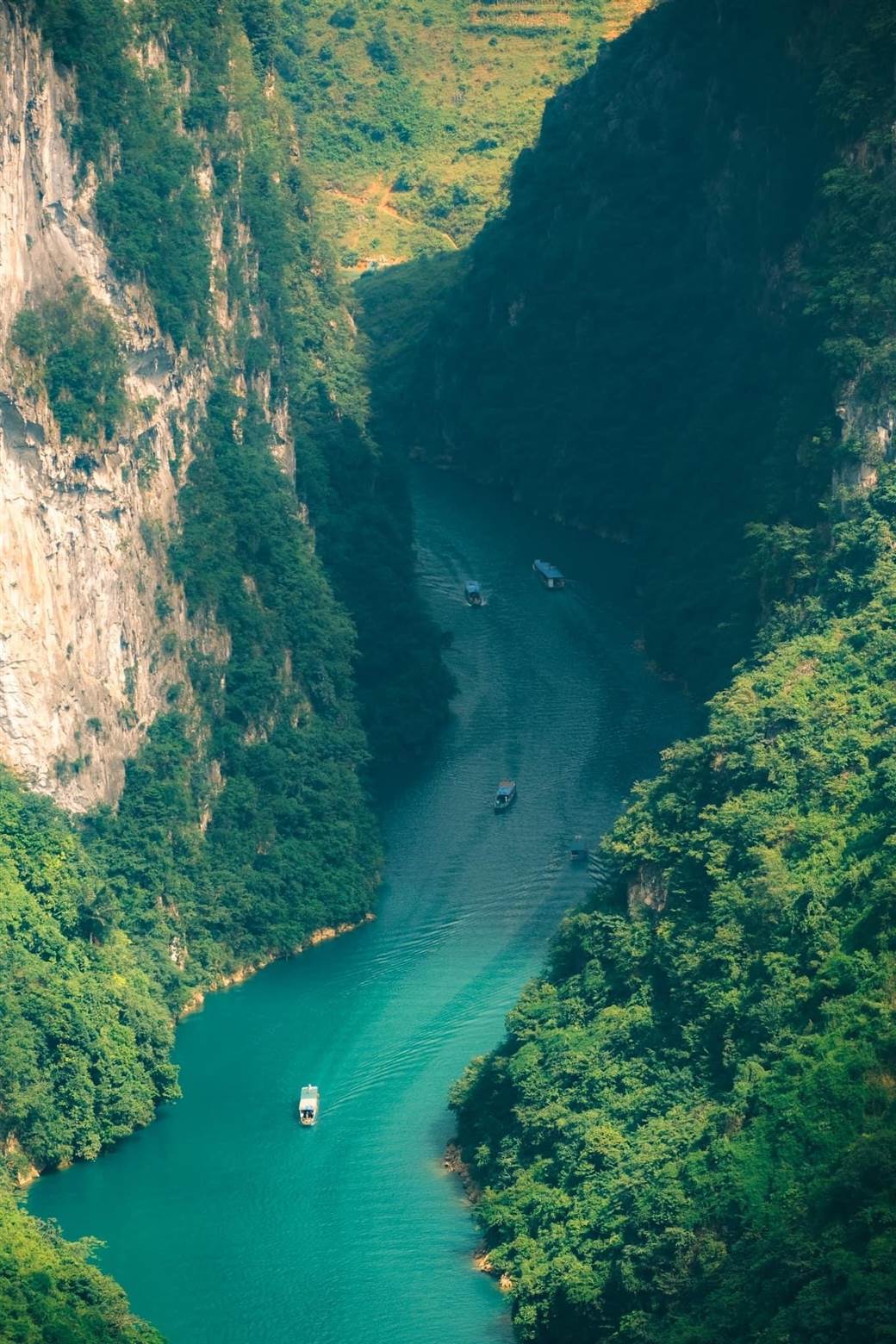
1.2 Cultural & Ethnic Backdrop
The lands surrounding Tu San Canyon are home to diverse ethnic minority groups, primarily the Hmong, Dao, Giay, and Tay peoples. These communities have adapted to the challenging mountain environment over generations, developing unique agricultural techniques, architectural styles, and cultural practices. Their colorful traditional clothing, intricate handicrafts, and seasonal festivals add a rich cultural dimension to the natural spectacle of the canyon.
Villages perched on mountain slopes and valleys near the canyon continue traditional ways of life largely unchanged for centuries. Local farmers cultivate terraced fields along impossibly steep hillsides, creating a human-made landscape that complements the natural beauty of the region. The canyon itself features in local folklore and spiritual beliefs, with many communities considering certain sections sacred or connected to ancestral spirits.
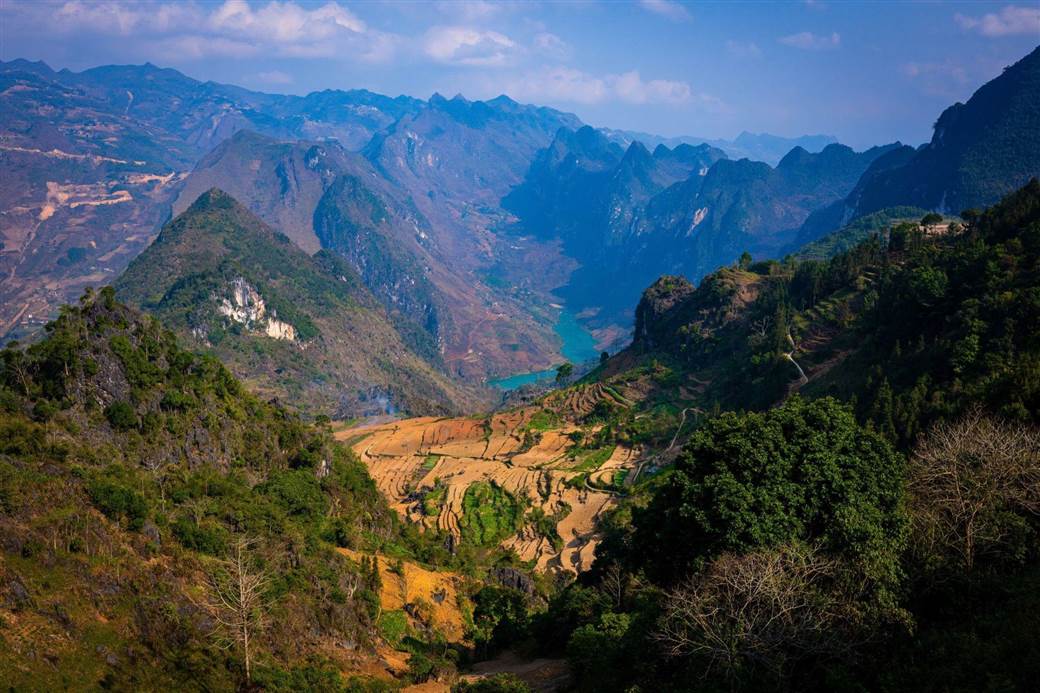
2. How Deep and Majestic Is Tu San Canyon?
Tu San Canyon impresses not just with its beauty but with its remarkable dimensions that have earned it recognition as Vietnam’s deepest canyon and one of the most significant in Southeast Asia. Standing at a viewing point along Ma Pi Leng Pass, travelers often find themselves speechless as they gaze down at the immense depth below, where the Nho Que River appears as a thin green ribbon winding between towering walls of stone.
2.1 Key Facts: Length, Depth, Formation
Tu San Canyon stretches approximately 1.7 kilometers in length, carving a dramatic path through the limestone mountains of Ha Giang. Its most impressive feature is its extraordinary depth, which reaches approximately 800-1,000 meters from the highest points of the surrounding cliffs to the river below. The canyon walls rise almost vertically at gradients of 70-90 degrees, creating an imposing corridor of stone that leaves visitors awestruck at nature’s sculptural power.
The formation process of Tu San Canyon began millions of years ago when tectonic forces pushed ancient seabeds upward, creating the limestone mountains that dominate the region today. Over countless millennia, the persistent flow of the Nho Que River gradually cut through these limestone formations, deepening its channel and creating the steep-sided gorge we see today. This ongoing process of erosion continues to shape the canyon, albeit imperceptibly to human observers.
The canyon’s distinctive emerald-green water derives from mineral content and algae, creating a striking contrast against the gray limestone walls. During different seasons, the water changes in both color intensity and volume, with the rainy season bringing faster currents and deeper water levels. The surrounding karst landscape features numerous caves, underground streams, and distinctive rock formations that enhance the area’s geological significance.
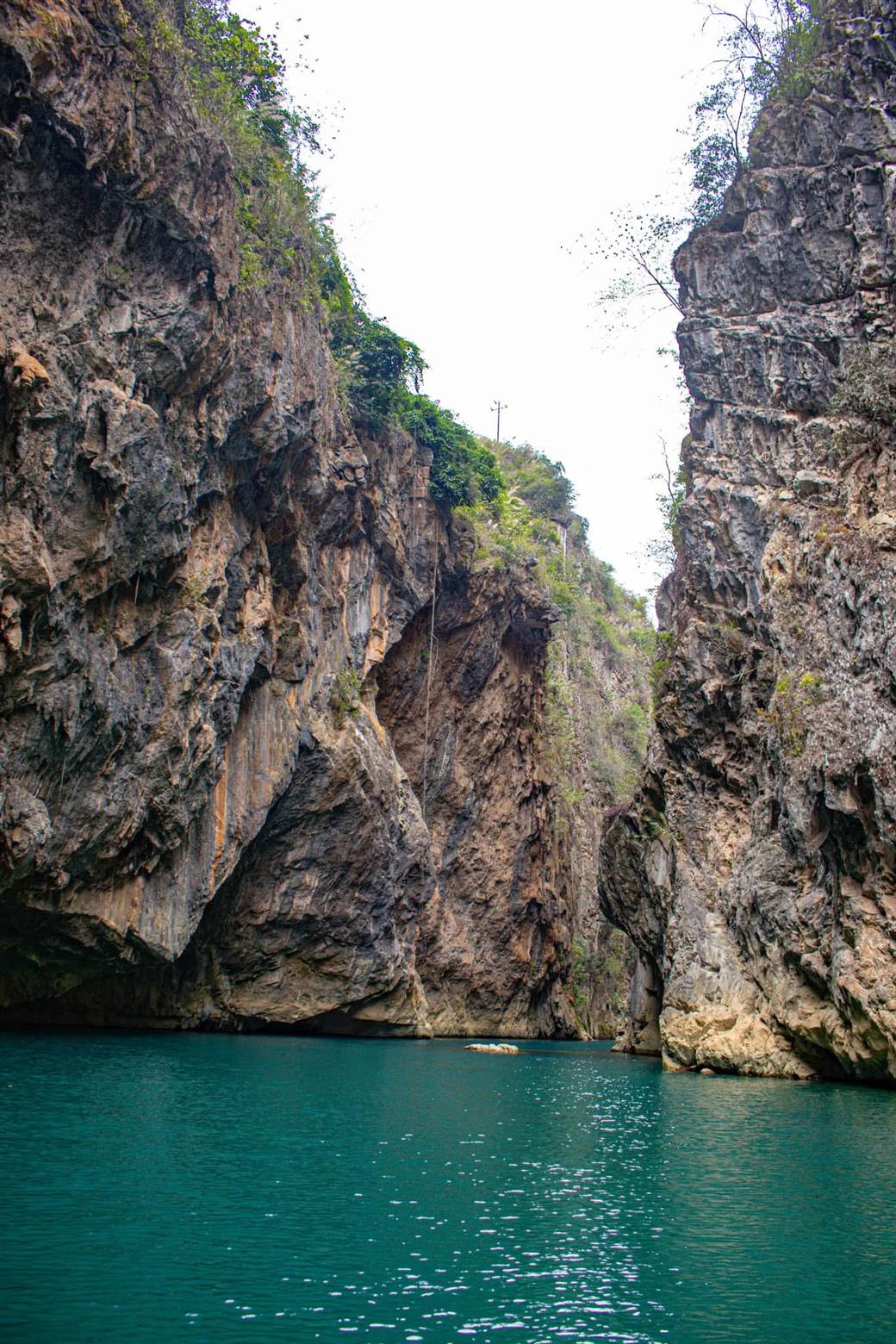
3. When to Visit Tu San Canyon
Timing your visit to Tu San Canyon significantly impacts your experience, as seasonal variations affect everything from water conditions to surrounding landscapes and local cultural activities. While the canyon impresses year-round, certain periods offer distinct advantages depending on your interests and preferences.
3.1 Seasons and Flower Blooms
The ideal time to visit Tu San Canyon falls between October and April, during the dry season when rainfall is minimal and skies tend to be clear. This period offers the safest road conditions for navigating the challenging Ma Pi Leng Pass and provides optimal visibility for appreciating the canyon’s dramatic contours. October through November brings moderate temperatures, typically ranging from 15-25°C (59-77°F), creating comfortable conditions for both boat trips and viewing from overlooks.
February and March transform the surrounding landscapes with blooming plum and peach blossoms that dot the mountainsides with delicate whites and pinks. This season also coincides with traditional spring festivals among local ethnic communities. For photography enthusiasts, early morning visits between November and February often capture magical scenes as mist rises from the canyon, creating ethereal landscapes as sunlight filters through.
October through early November brings the famous buckwheat flower season, when hillsides near the canyon erupt in soft pink and purple blooms. This period coincides with the rice harvest in many terraced fields, adding golden hues to the landscape panorama. While summer months (May-September) offer lush green scenery, they also bring heavy rainfall that can cause landslides and foggy conditions that obscure views of the canyon.
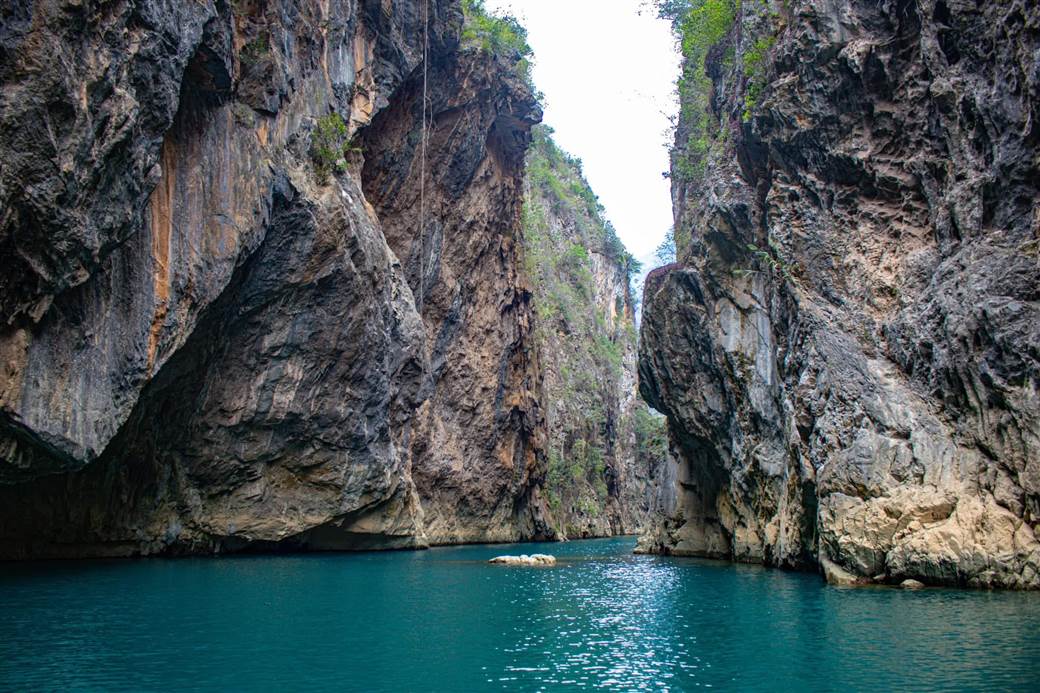
4. How to Get to Tu San Canyon
Reaching Tu San Canyon requires some planning, as its remote location in Vietnam’s northern frontier makes access part of the adventure. Most travelers visit the canyon as part of the larger Ha Giang Loop experience, though understanding specific access points and transportation options enhances your journey to this natural wonder.
4.1 Access by Road (Ha Giang Loop, Ma Pi Leng Pass)
The primary approach to Tu San Canyon involves traveling along the Ha Giang Loop, typically starting from Ha Giang City. From there, the journey continues through Quan Ba, Yen Minh, and Dong Van before reaching the legendary Ma Pi Leng Pass. This mountain road, considered among Vietnam’s most spectacular and challenging routes, provides the most famous viewpoints of the canyon below. The complete loop spans approximately 350 kilometers and takes 3-5 days to complete properly.
Most travelers navigate the loop by motorcycle, either self-driven or with an experienced local driver (known as “Easy Riders”). The roads demand careful driving, particularly along Ma Pi Leng Pass where sharp curves and steep drops require full attention. For those uncomfortable with motorcycles, private car services with experienced drivers can be arranged through companies like Phieu Travel, though this option costs significantly more than motorcycle travel.
The closest physical access point to the canyon is near Pa Vi village, at the foot of Ma Pi Leng Pass. A small parking area marks the starting point for the trail down to the boat docks. The descent involves a moderately challenging path with several hundred steps carved into the mountainside. This trail can be slippery after rain, so proper footwear is essential for safely reaching the boat docks below.
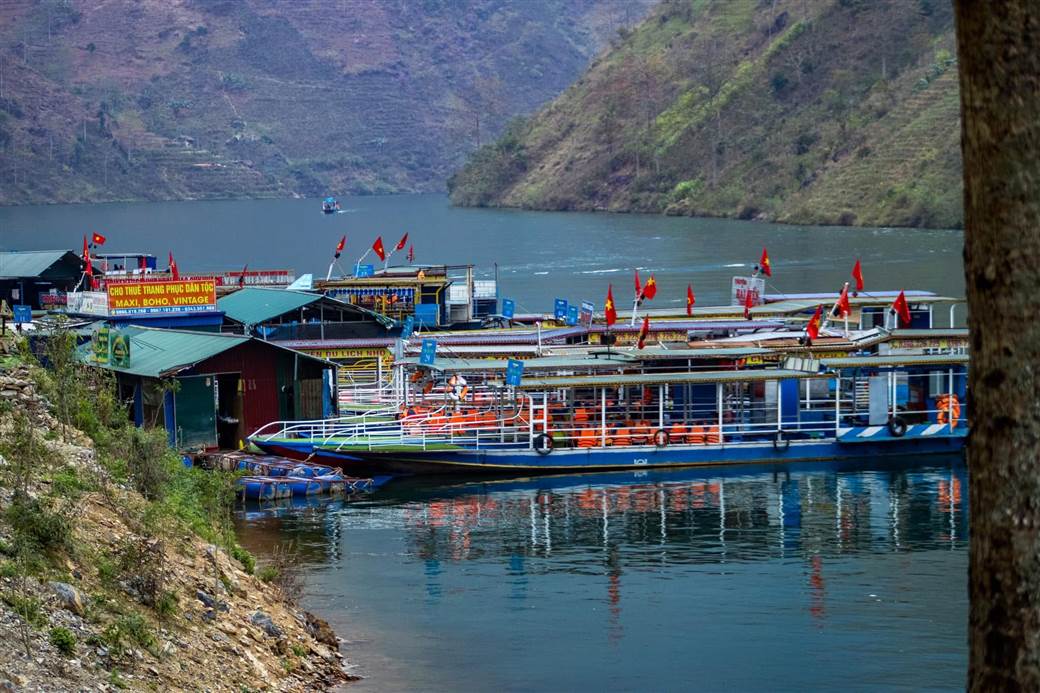
4.2 Booking a Boat or Kayak Trip
The most immersive way to experience Tu San Canyon is from the water itself, which requires either a boat or kayak excursion on the Nho Que River. Boat services operate daily from approximately 7:00 AM to 5:00 PM, with the first departure point located at the foot of Ma Pi Leng Pass and a secondary point accessible from Meo Vac district. No advance reservations are typically needed for standard boat trips, though arriving earlier in the day helps avoid potential crowds.
Standard shared boat tours last 30-45 minutes and cost between 100,000-150,000 VND per person (approximately $4-6 USD). These boats typically accommodate 8-10 passengers and provide basic safety equipment including life jackets. For a more personalized experience, private boat charters are available for 400,000-600,000 VND ($17-26 USD) and allow you to customize your route and duration slightly.
For adventurous travelers, kayaking offers a more active way to explore the canyon waters. Kayak rentals cost approximately 200,000 VND ($8-9 USD) per hour and provide greater freedom to navigate at your own pace. However, kayaking is only recommended during calm water seasons (October-April) and for those with prior paddling experience. Phieu Travel can arrange comprehensive packages that include transportation to access points, boat or kayak fees, and local guides who enhance the experience with cultural and geological insights.
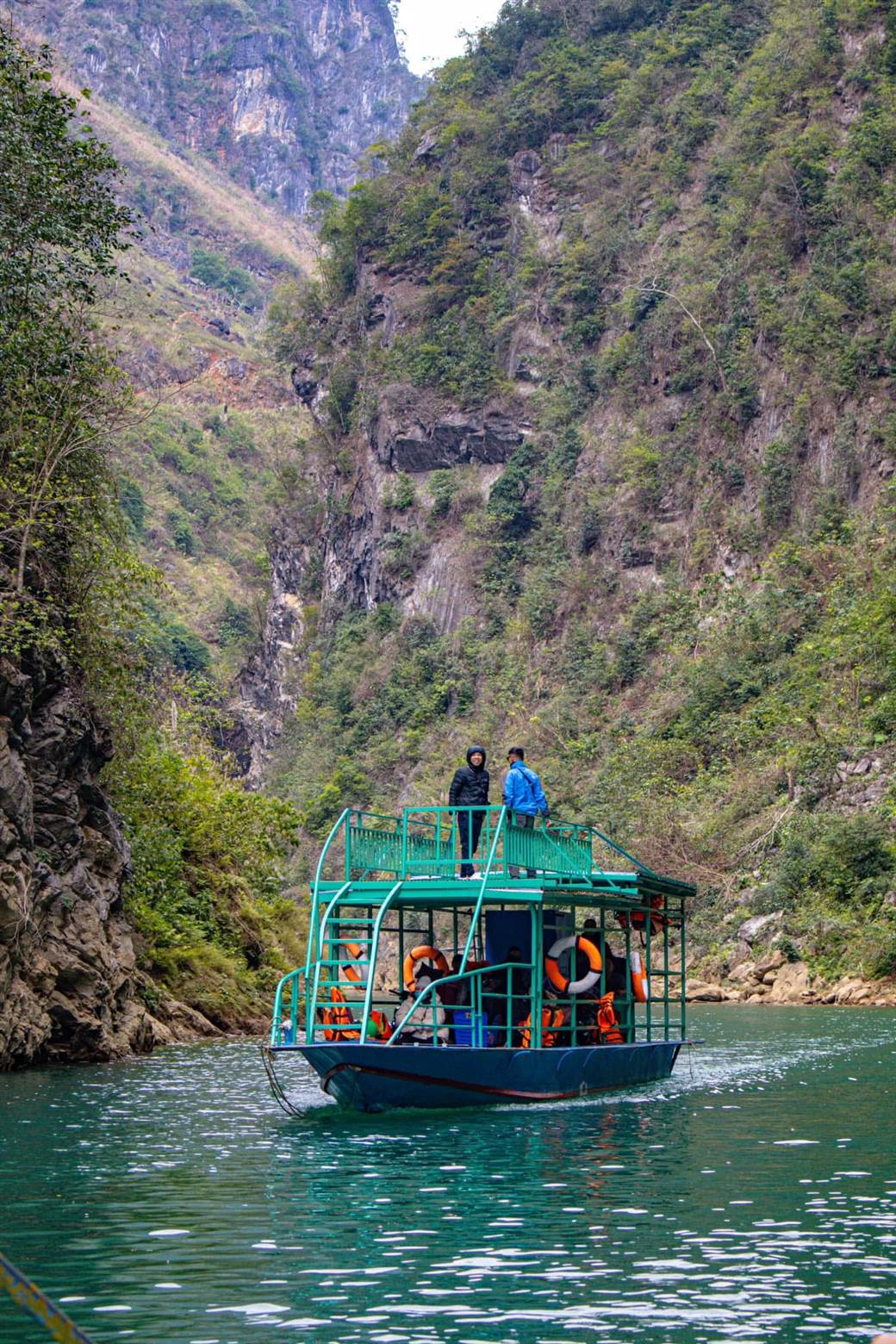
5. What to Do: Must-Experience Activities
Tu San Canyon offers visitors multiple ways to experience its grandeur, from adrenaline-pumping adventures to peaceful contemplation of natural beauty. Each activity provides a different perspective on this remarkable landscape, allowing travelers to connect with both the natural environment and the cultural heritage that surrounds it.
5.1 Boat Trip Highlights
The classic boat journey through Tu San Canyon delivers an unforgettable perspective as you glide between towering limestone walls. As your boat navigates the emerald waters, look up to appreciate the true scale of the canyon, where cliff faces rise hundreds of meters above. The angle from below reveals intricate erosion patterns and occasional small caves that aren’t visible from the viewpoints above.
Most boat trips include stops at several key points of interest, including a small beach area where passengers can briefly disembark to take photos. Local boat operators often point out distinctive rock formations that resemble animals or human figures, adding elements of storytelling to the experience. The natural acoustics within the canyon create fascinating echo effects, which boat guides sometimes demonstrate by calling out or singing traditional songs.
For the most magical experience, consider booking an early morning boat trip when the water often appears mirror-smooth, perfectly reflecting the canyon walls. The changing light throughout the day transforms the appearance of both water and stone, with midday offering the brightest emerald hues and late afternoon bringing golden tones to the limestone. Remember to bring a waterproof case for electronics, as light spray is common, especially when multiple boats create gentle wakes.
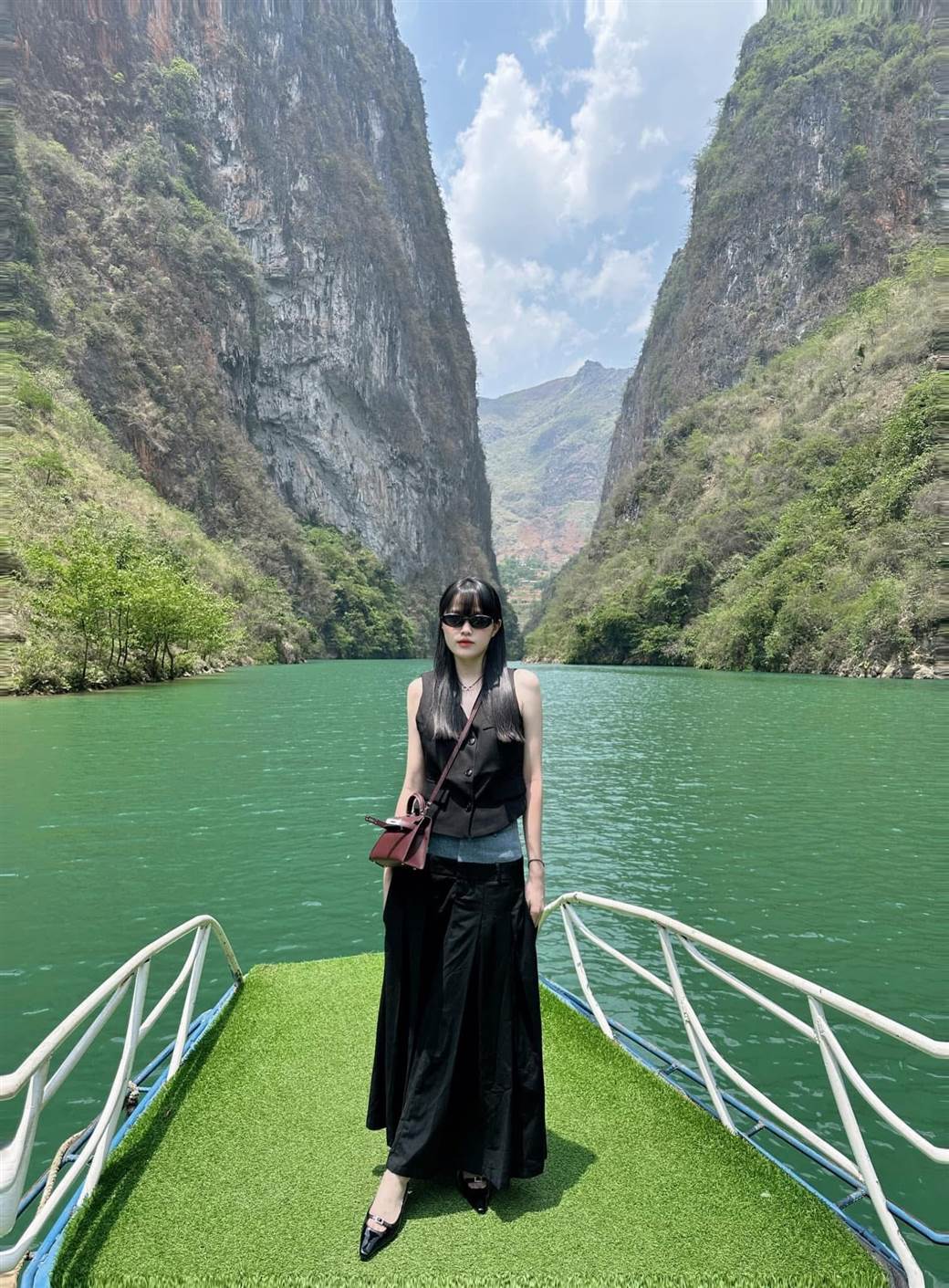
5.2 Kayaking & Photography Tips
Kayaking through Tu San Canyon offers a more intimate connection with the environment, allowing you to set your own pace and explore quiet corners away from the main boat routes. The physical act of paddling through the canyon creates a deeper sense of scale and personal achievement as you navigate beneath the towering cliffs. Most kayak rentals include basic instruction, though prior experience helps maximize enjoyment.
For photography enthusiasts, the canyon presents endless compositional opportunities but also significant challenges. The extreme contrast between bright sky and shadowed canyon walls requires careful exposure management, with bracketing recommended for capturing full dynamic range. A polarizing filter proves invaluable for reducing glare on the water surface and enhancing the emerald color. Wide-angle lenses (16-24mm) best capture the canyon’s scale, while medium telephotos (70-200mm) excel at isolating interesting rock details.
The most photogenic lighting typically occurs during the “golden hours” shortly after sunrise or before sunset when softer, directional light brings depth and texture to the canyon walls. Photographers should consider spending a full day in the area, capturing different perspectives from both viewpoints along Ma Pi Leng Pass and from water level. Time-lapse setups from safe overlook points can capture fascinating light changes and cloud movements across the canyon throughout the day.
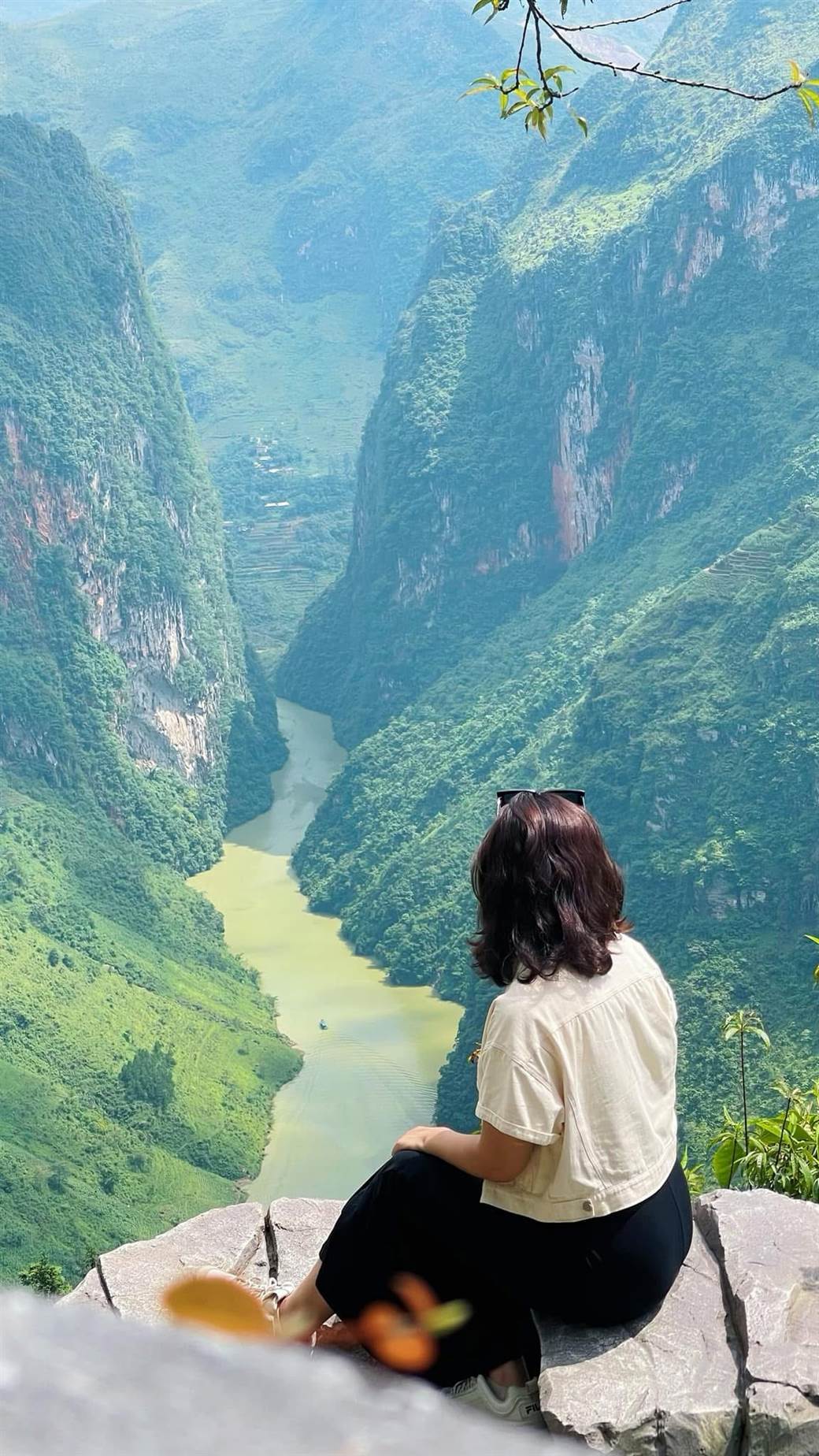
5.3 On-foot Exploration
While water-based activities dominate most visitors’ experiences, exploring sections of Tu San Canyon on foot reveals details and perspectives missed from boats or distant viewpoints. Several hiking trails of varying difficulty lead to different vantage points along the canyon rim. The most accessible begins near the Ma Pi Leng Panorama viewing platform, following a ridge for approximately 2 kilometers with multiple dramatic overlooks.
For more adventurous travelers, local guides can lead treks to less-visited sections of the canyon where traditional paths used by ethnic minority communities provide access to hidden viewpoints. These half-day excursions often include visits to small villages where you might observe traditional crafts like indigo dyeing or hemp weaving. Always arrange such hikes through reputable operators like Phieu Travel who work with knowledgeable local guides familiar with safe routes and weather patterns.
The descent path to the boat docks itself offers valuable exploration opportunities, with several natural viewing platforms along the way. This steep trail passes through different vegetation zones, from alpine scrub near the top to more tropical species near the river. Taking time to descend slowly allows for spotting interesting plants, occasional wildlife, and unique geological features that showcase the area’s biodiversity alongside its dramatic landforms.
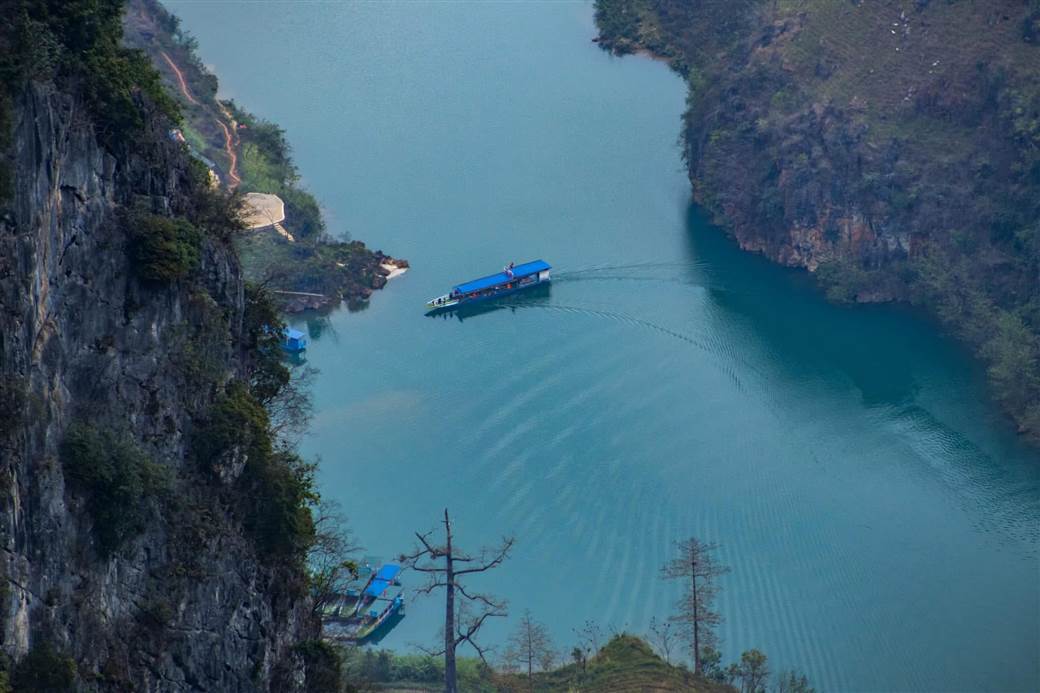
6. Essential Tips & FAQs for Tu San Canyon Visitors
Visiting Tu San Canyon requires some preparation to ensure a safe, comfortable, and rewarding experience. Understanding practical considerations from costs to cultural sensitivities enhances your journey and helps preserve this remarkable natural wonder for future generations.
6.1 Costs, Safety, Local Customs
Experiencing Tu San Canyon remains relatively affordable compared to similar natural attractions worldwide. Beyond transportation costs to reach Ha Giang (approximately 250,000-350,000 VND for bus tickets from Hanoi), specific canyon-related expenses include entrance fees to viewing platforms (20,000-30,000 VND), boat rides (100,000-150,000 VND per person for shared boats), and potentially guide services (300,000-500,000 VND per day). Accommodations in nearby towns like Dong Van or Meo Vac range from 150,000-600,000 VND depending on comfort level.
Safety considerations should include appropriate footwear with good traction for the sometimes slippery descent to boat docks. Weather monitoring is essential, as sudden storms can make both roads and water activities dangerous. Always wear provided life jackets during boat trips regardless of swimming ability, as the river contains strong currents in certain sections. Sun protection is crucial, as the canyon’s orientation can create intense exposure even on seemingly mild days.
When interacting with local communities near the canyon, remember that many ethnic minority groups maintain traditional customs and beliefs. Ask permission before photographing people, particularly elders or children. Modest dress is appreciated when visiting villages, with shoulders and knees covered. Learning a few basic Vietnamese phrases demonstrates respect and facilitates meaningful exchanges. Consider purchasing handcrafted souvenirs directly from artisans to support local economies.
6.2 Travel Resources
Several visitor facilities enhance the Tu San Canyon experience. The Ma Pi Leng Panorama café provides refreshments and restrooms along with one of the best canyon viewpoints. Small food vendors operate near boat docks, offering simple meals and drinks. For comprehensive information, the Dong Van Geopark Visitor Center in Dong Van town provides educational displays about the region’s geology and cultural heritage.
For travelers seeking deeper understanding, Phieu Travel offers specialized guided tours focusing on both natural and cultural aspects of Tu San Canyon. These programs typically include knowledgeable local guides who provide context and interpretations beyond what independent travelers might discover. Services range from single-day canyon excursions to multi-day itineraries incorporating the entire Ha Giang Loop with canyon experiences as highlights.
Mobile connectivity remains limited in the canyon area, with sporadic signal strength even from major Vietnamese carriers. Download offline maps, translation tools, and any necessary information before reaching the area. Most accommodations in Dong Van and Meo Vac offer WiFi, though connection speeds tend to be slow. For emergency situations, the nearest medical facilities are basic clinics in Dong Van and Meo Vac, with more comprehensive care requiring transport to Ha Giang City.
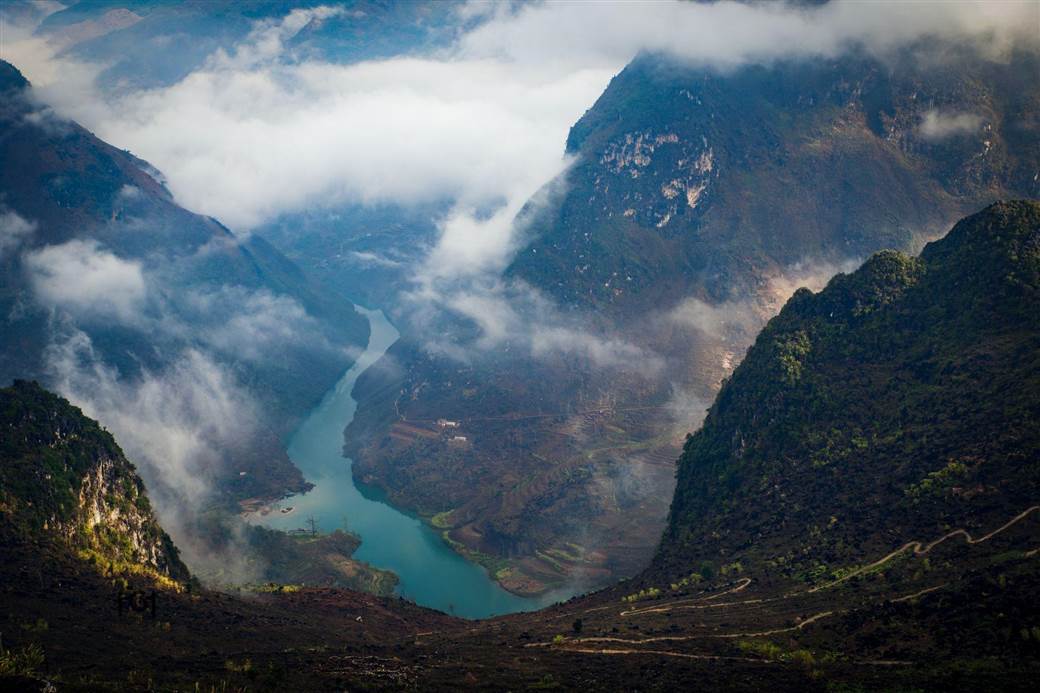
From the emerald depths of the Nho Que River to the towering limestone walls that reach for the sky, Tu San Canyon represents Vietnam’s wild northern frontier at its most spectacular. This natural masterpiece offers more than just dramatic views it provides a journey into geological time, cultural diversity, and the profound relationship between humans and landscape. Whether you’re gazing down from Ma Pi Leng Pass or looking up from a gently rocking boat, the canyon leaves an indelible impression on everyone fortunate enough to witness its grandeur. As you plan your Ha Giang adventure, make Tu San Canyon the centerpiece of your northern Vietnam exploration. Let Phieutravel.com guide your journey through this remarkable landscape, ensuring you experience all the wonders that Vietnam’s deepest canyon has to offer.
Read more:
- Quan Ba Twin Mountains: Ha Giang’s Iconic Fairy Hills and Complete Travel Guide
- Vuong family mansion: the architectural marvel and cultural legacy of Ha Giang
- Ha Giang Loop Safety Tips: How to Ride Securely in Vietnam’s Northern Mountains

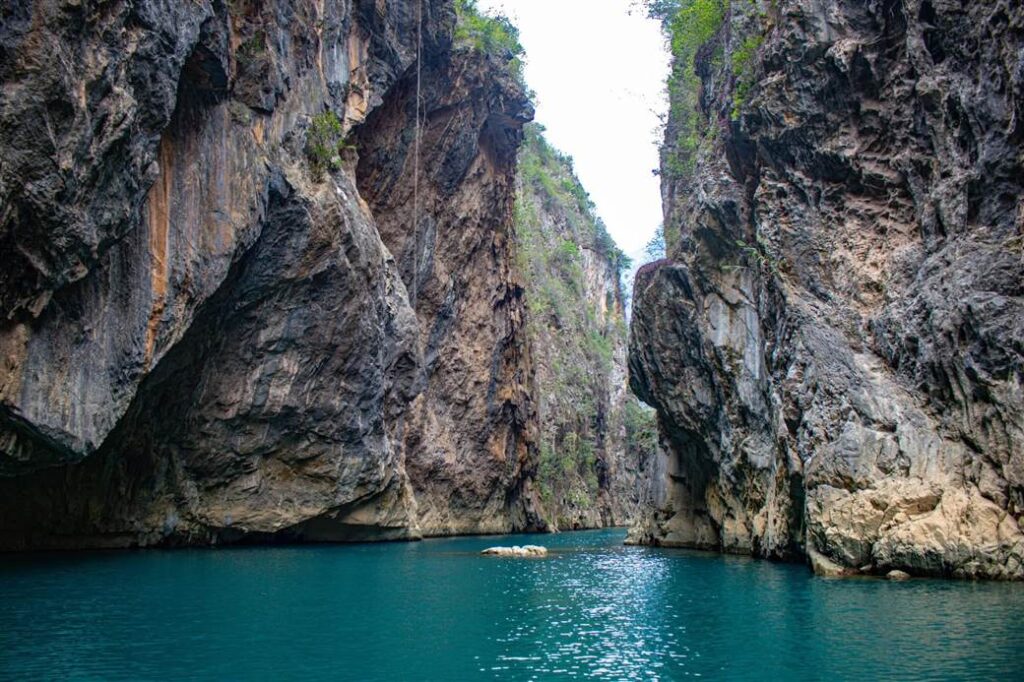
You Might Also Like
Ha Giang Weather in September: Complete Guide for Travelers
Exploring the magnificent Ha Giang Loop in September offers travelers a perfect balance of favorable[...]
Quan Ba Twin Mountains: Ha Giang’s Iconic Fairy Hills and Complete Travel Guide
The mystical Quan Ba Twin Mountains rise from the emerald valleys of Ha Giang like[...]
Vuong family mansion: the architectural marvel and cultural legacy of Ha Giang
Deep in Vietnam’s northern highlands, where mist-shrouded mountains meet terraced rice fields, stands a testament[...]
Ha Giang Loop Safety Tips: How to Ride Securely in Vietnam’s Northern Mountains
The Ha Giang Loop, with its winding mountain roads and breathtaking landscapes, offers one of[...]
The Ultimate Guide to the M-Shaped Curve on Ha Giang Loop
Vietnam’s remote northern province of Ha Giang hides a natural wonder that has captivated adventurous[...]
Most Beautiful Places to Visit in Vietnam: Essential Destinations and Insider Tips
Vietnam captivates travelers with its stunning landscapes, rich cultural heritage, and warm hospitality. From mist-shrouded[...]
Beyond the Beaten Path: Discovering Ha Giang Province in Northeast Vietnam
Ha Giang Province in Northeast Vietnam stands as one of the country’s last frontiers for[...]
Rainy season in Ha Giang: what to expect, when to go, and travel tips
Vietnam’s northern frontier reveals a different face during the rainy season, transforming Ha Giang’s limestone[...]